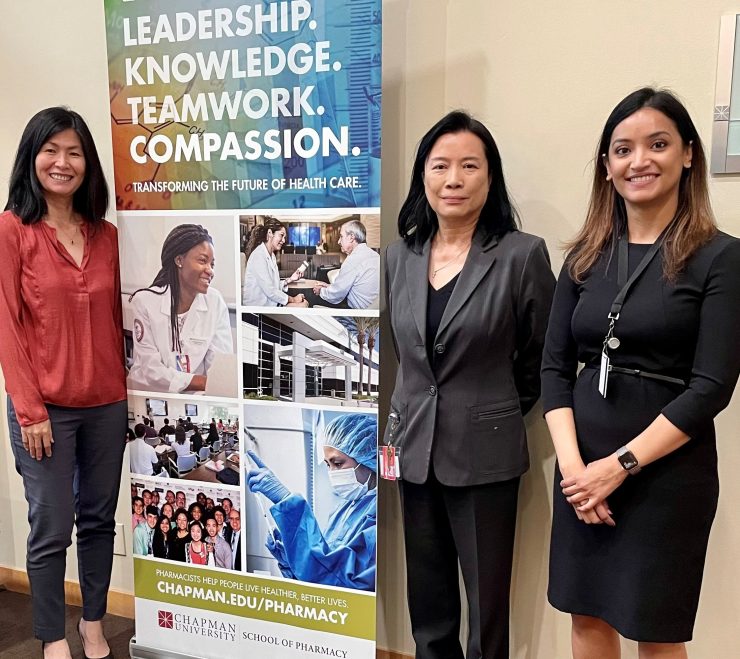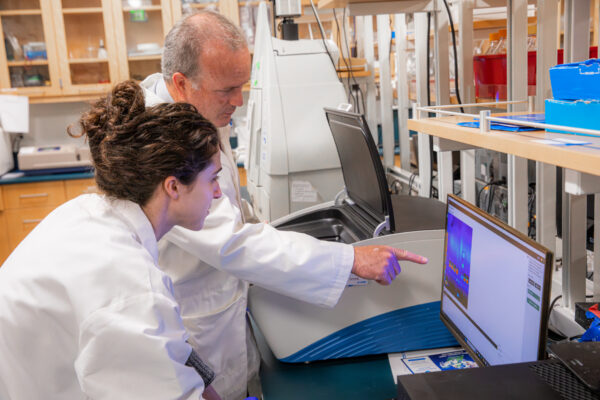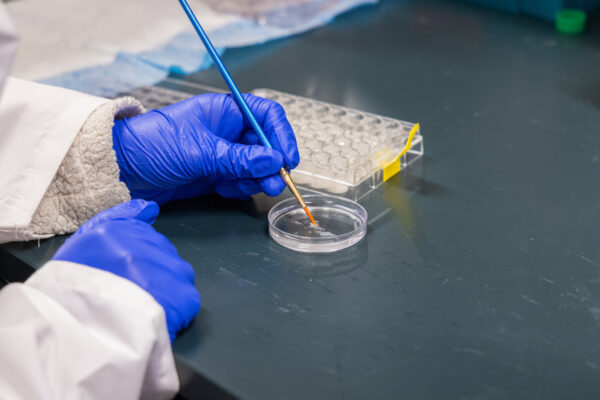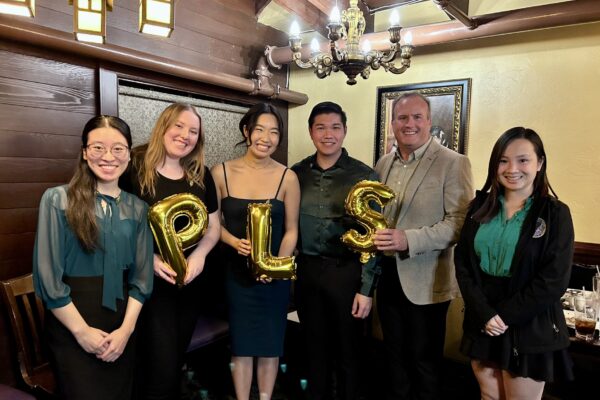Three Chapman University pharmacy professors are working at the forefront of a game-changing tool in medicine.
Jerika Lam, Moom Roosan and Mary Gutierrez, who all teach in Chapman University School of Pharmacy (CUSP), are advocating for the critical role pharmacists play in the rising field of what has become commonly known as “precision medicine.”
Pharmacogenomics – a part of precision medicine, or “PGx” for short – uses a test that sequences a person’s genes to better customize medications for maximum impact and safety. Lam, an associate professor of pharmacy practice, says that going from traditional prescription methods to using a person’s genetic makeup to tailor their prescriptions is like going from using Thomas guides to Google Maps.
“We went from trying to look at the map, looking at traffic signals and traffic signs, to now, when we have our phones talking to us or the map is just projected onto the car’s monitor. That is where we’re at with pharmacogenomics,” Lam says.
She, Gutierrez and Roosan published an article in the May 2022 Pharmacy Times, a widely read pharmacy publication, on the subject with two other authors.
“It is an area where our faculty are leaders and where Chapman University School of Pharmacy and our partners are at the forefront of precision medicine practice,” says School of Pharmacy Dean Ron Jordan. “I’m proud to see Chapman taking this challenging area to the masses of practicing pharmacists.”
Variants in a person’s DNA impact how well they metabolize a drug. If a drug isn’t metabolized, it can cause side effects and or it may not be effective in treating what it was prescribed for, according to Roosan, a PGx specialist and assistant professor of pharmacy practice.
“Sometimes by looking at the DNA we can see who might be a good candidate for a certain drug versus not,” she says.
She and her colleagues wrote in the Pharmacy Times that pharmacists with PGx training “are best suited to identify patients at risk and use appropriate PGx tests to evaluate patients’ medications across multiple specialties, including cardiology, mental health, pain management and oncology.”
PGx uses DNA tests that “contain the equivalent of millions of tests in one,” according to the Food and Drug Administration. Lam likens them to 23andMe and Ancestry.com tests.
“It’s analogous to those two types of tests, but now it’s more medication-specific to help guide the clinicians in terms of determining what would be the better treatment for that patient,” she says.
Gutierrez – a psychiatry specialist and professor of pharmacy practice who recently tested herself – says that these tests have become more popular in the last six years.
“Many of my patients are actually asking for the PGx tests so that we can interpret the reports and explain the results to them – this is how a patient didn’t know why they have tried multiple antidepressants with poor response, or why a patient had so many side effects,” she says. “It’s already a very important tool.”
She said the tests used to cost a few thousand dollars, but now insurance may pay for them, and there is pending national and state legislation to cover test costs. Lam, an infectious diseases specialist, says wider use of PGx will save health care systems money.
PGx is “definitely a game changer. How big of a game changer is going to be dependent on the prescribers and the practitioners,” she says.
The three researchers wrote the Pharmacy Times article to help spread the word about PGx. Roosan covers it in lectures to pharmacy and physician assistant students, and Lam and Gutierrez have taught workshops for pharmacists and other health care providers. They published a textbook last year, “Pharmacogenomics: A Primer for Clinicians.”
“We stressed that we have to treat the patient as a whole, and pharmacogenomics is one piece of the puzzle that we try to use to help our patients,” Roosan says.




